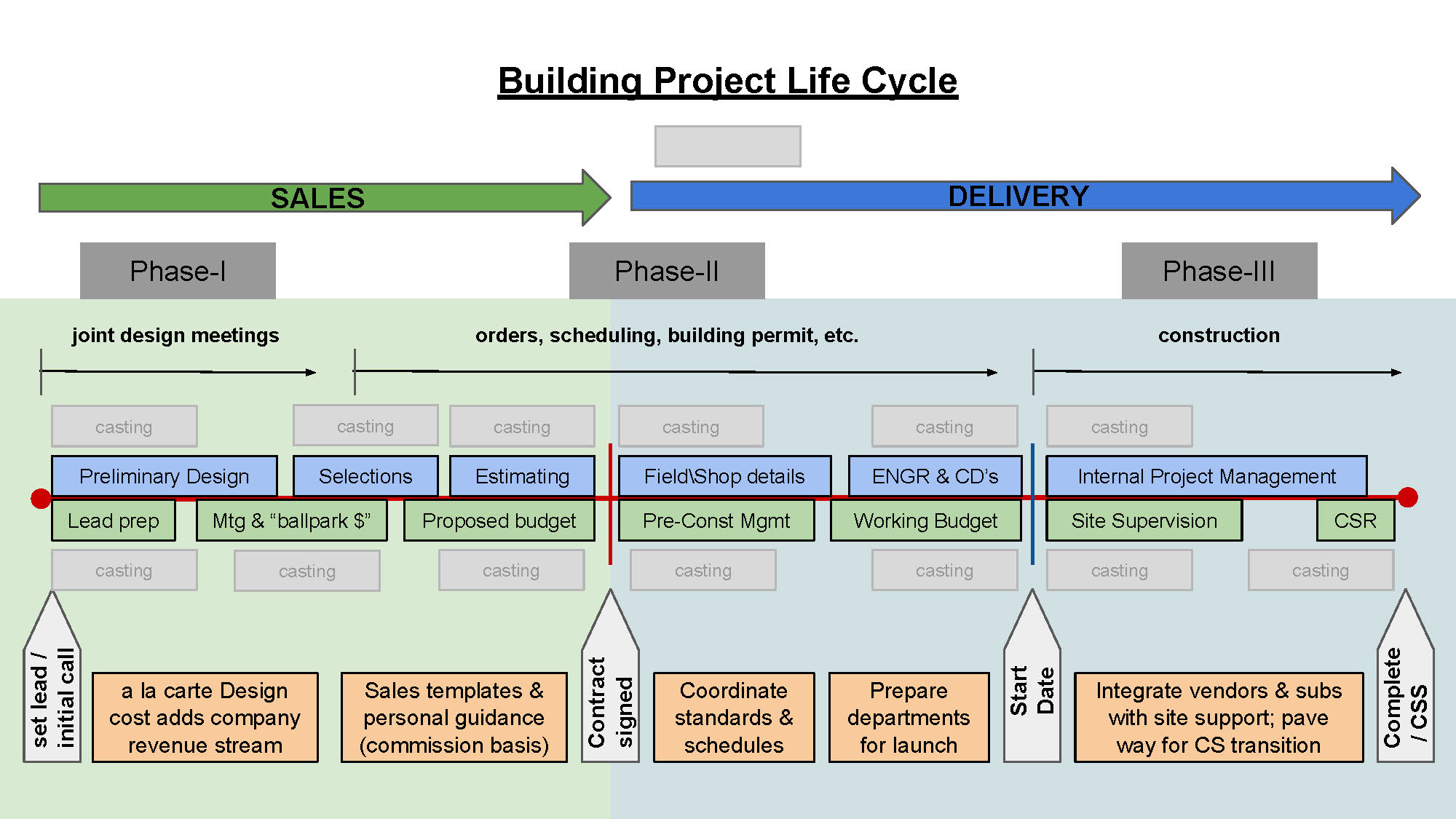Here is a case study in providing executive coaching and designing management processes for a Class-A licensed contractor. They had relatively low annual revenue because of limiting themselves to Kitchen and Bath remodeling, turning down larger projects that would often come in from their trustworthy customer referral stream. They had been uncomfortable stretching out of this comfort zone in the past, because as projects get larger and more drawn out, it gets more difficult to control quality of the work, and subcontractor selection thins out.
Customers were also sometimes confused by the design/build process – how different phases of the project are divided, and how that compares to what investment they were expected to make by Sales at various intervals. My first order of business was to compile a graphic that accurately depicted the life-cycle of a project, from both the side of the property Owner and the Builder, how those major task groups were divided up, who was accountable for what, and identify the benchmarks that would trigger next progress steps or payments. This was then used as a sales tool to give the Builder and managers confidence in their commitment to a project, and to help the customer feel secure that their needs were being met. It continued to be an interactive organization analysis tool that would help managers identify staffing needs in their small company so we could assign specific tasks and recruit talent where there was an opening not filled.
Next was to arrange an informal meeting group, including the primary subcontractors the Builder preferred to use. A “say anything” round-table session where the principal owner was conveniently left off the invite list (“you can’t handle the truth!”). Listening to the concerns and interests of each independent contractor, we developed a plan of action to account for things that had historically been missed by designers, Sales, permit preparers, and integration between each trade, as their work could now seamlessly overlap through the progression of the job.
The next several projects closed at a price-point three or four times higher than their previous typical jobs, and had unprecedented cooperation between trades and customer satisfaction.

